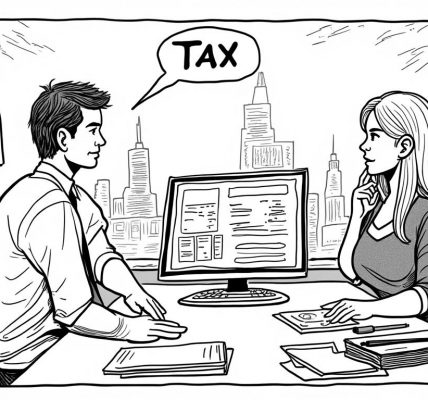
Landlord-Tenant Laws in the U.S.: Key Differences by State
Reading time: 12 minutes
Ever wondered why your friend in California gets 30 days to fix lease violations while you in Texas only get 3? You’re not alone in this confusion. Navigating the complex maze of landlord-tenant laws across America can feel overwhelming, but understanding these differences is crucial for both property owners and renters.
What You’ll Discover:
- Critical state-by-state variations in tenant rights
- Security deposit regulations that vary dramatically
- Eviction processes and timeline differences
- Rent control policies and their practical implications
Well, here’s the straight talk: Successful property management isn’t about knowing every law—it’s about understanding the key differences that impact your daily operations.
Table of Contents
- Understanding the Legal Framework
- Security Deposit Regulations by State
- Eviction Laws: Critical State Variations
- Rent Control and Stabilization Policies
- Essential Tenant Rights and Protections
- Your Legal Compliance Roadmap
- Frequently Asked Questions
Understanding the Legal Framework
Think of landlord-tenant law as a complex puzzle where each state provides different pieces. While federal laws establish baseline protections—like the Fair Housing Act—states craft their own detailed regulations that can vary dramatically.
Quick Scenario: Imagine you’re a landlord expanding from Florida to New York. In Florida, you might collect a security deposit without strict timeline requirements for return. In New York, you’re legally required to return deposits within 14 days or face penalties. This isn’t just bureaucratic red tape—it’s the difference between smooth operations and costly legal battles.
The Three-Tier System
American landlord-tenant law operates on three levels:
- Federal Laws: Establish anti-discrimination protections
- State Laws: Define core landlord-tenant relationships
- Local Ordinances: Add specific municipal requirements
According to the National Apartment Association, “Over 70% of landlord-tenant disputes stem from misunderstanding state-specific requirements rather than federal law violations.”
Security Deposit Regulations by State
Security deposits represent one of the most contentious areas in landlord-tenant relationships. The variations between states are staggering and can significantly impact your bottom line.
State Comparison: Security Deposit Limits
| State | Maximum Deposit | Return Timeline | Interest Required | Penalty for Late Return |
|---|---|---|---|---|
| California | 2 months rent (unfurnished) | 21 days | No | Up to $600 + attorney fees |
| Texas | No limit | 30 days | No | $100 + 3x deposit amount |
| New York | 1 month rent | 14 days | Yes (if over $1,000) | 2x deposit amount |
| Florida | No limit | 15-60 days | No | Actual damages + attorney fees |
The Hidden Costs of Non-Compliance
Case Study: A Philadelphia landlord recently faced a $4,200 penalty for returning a $1,400 security deposit six days late. Pennsylvania law requires return within 30 days, and the penalty was triple the deposit amount. This wasn’t intentional—simply a calendar oversight that cost thousands.
Pro Tip: Create automated reminders 10 days before your state’s deadline. The right preparation isn’t just about avoiding problems—it’s about protecting your rental income and reputation.
Eviction Laws: Critical State Variations
Eviction processes vary so dramatically between states that what takes 30 days in one location might require 90+ days in another. Understanding these timelines is crucial for cash flow management and property planning.
Eviction Timeline Comparison
Fastest Eviction States (Average Days)
25 days
30 days
35 days
75 days
90+ days
Notice Requirements: The Devil’s in the Details
Beyond timelines, states differ dramatically in notice requirements:
- Pay or Quit Notices: Range from 3 days (Nevada) to 14 days (Delaware)
- Cure or Quit Notices: 3 days (California) to 30 days (Vermont)
- No-Cause Termination: Prohibited in some states, 30-90 days in others
Real-World Impact: A Denver landlord recently discovered that Colorado’s new “Good Cause” eviction law means they can no longer terminate month-to-month tenancies without specific legal reasons. This fundamental shift requires completely rethinking lease strategies and tenant screening processes.
Rent Control and Stabilization Policies
Rent control remains one of the most politically charged aspects of landlord-tenant law. Currently, only five states allow municipalities to implement rent control: California, New York, New Jersey, Maryland, and Oregon.
The Rent Control Landscape
Oregon’s Unique Approach: In 2019, Oregon became the first state to implement statewide rent control, capping annual increases at 7% plus inflation. This affects approximately 90% of rental units statewide, making it the most comprehensive rent control policy in America.
Key Statistics:
- Only 2.3% of U.S. rental units are subject to rent control
- Cities with rent control have 15% higher adjacent-area rents
- Rent-controlled units have 40% lower turnover rates
Practical Implications for Property Owners
If you’re operating in rent-controlled markets, consider these strategies:
- Vacancy Decontrol Planning: Many jurisdictions allow market-rate pricing between tenancies
- Capital Improvement Considerations: Some areas allow rent increases for property improvements
- Portfolio Diversification: Balance controlled and market-rate properties
Essential Tenant Rights and Protections
Understanding tenant rights isn’t just about compliance—it’s about building better landlord-tenant relationships and avoiding costly disputes.
Habitability Standards: Beyond the Basics
While all states require “habitable” conditions, definitions vary significantly:
Arizona’s Unique Challenge: With extreme summer temperatures, Arizona law specifically requires landlords to maintain air conditioning systems in working order. Failure to repair AC within 5 days can justify tenant rent withholding or lease termination.
Cold Weather States: Minnesota requires landlords to maintain 68°F minimum temperatures during winter months, with specific penalties for heating failures.
Right to Repair and Deduct
Many states allow tenants to make repairs and deduct costs from rent, but limitations vary:
- California: Up to one month’s rent annually
- Texas: Repair and deduct not allowed
- New York: Limited to emergency repairs under $1,000
Privacy Rights and Entry Procedures
Landlord entry rights create frequent disputes. Most states require 24-48 hours notice, but exceptions and enforcement vary:
Case Study: A Seattle landlord faced $5,000 in damages after entering a rental unit without proper notice to show it to prospective buyers. Washington state’s strict privacy laws include punitive damages for violations, making compliance critical.
Your Legal Compliance Roadmap
Ready to transform legal complexity into operational confidence? Here’s your strategic action plan for navigating landlord-tenant laws effectively:
Immediate Action Steps (Next 30 Days)
- Audit Your Current Practices: Review your lease agreements, security deposit procedures, and notice forms against your state’s current requirements
- Create Compliance Calendars: Set up automated reminders for security deposit returns, lease renewals, and notice deadlines
- Establish Local Legal Resources: Identify a qualified attorney specializing in landlord-tenant law in your area
Medium-Term Strategies (Next 90 Days)
- Standardize Documentation: Develop state-compliant forms and procedures that protect both you and your tenants
- Implement Preventive Measures: Create regular property inspection schedules and maintenance protocols
- Build Tenant Relationships: Establish clear communication channels and response procedures
Long-Term Positioning (Next Year)
- Stay Informed: Subscribe to legal updates and join local landlord associations
- Consider Professional Management: Evaluate whether property management companies provide value for complex regulatory environments
The Bottom Line: Successful property management isn’t about perfection—it’s about consistent compliance and proactive communication. As rental markets continue evolving, landlords who prioritize legal compliance will build stronger, more profitable rental businesses.
What’s your biggest challenge in navigating landlord-tenant laws? The complexity isn’t going away, but your confidence in handling it can grow exponentially with the right preparation and knowledge.
Frequently Asked Questions
Can I charge different security deposits for different tenants?
While most states allow varying security deposit amounts based on legitimate factors like credit scores or pet ownership, you cannot discriminate based on protected characteristics. Always ensure your deposit policies are consistent, documented, and legally compliant. For example, charging higher deposits for tenants with poor credit is generally acceptable, but charging different amounts based on race or familial status violates federal fair housing laws.
What happens if I accidentally violate a state law I wasn’t aware of?
Ignorance of the law isn’t a legal defense, but many states distinguish between willful violations and honest mistakes. Penalties often depend on the severity and your response. If you discover a violation, consult with a local attorney immediately and take corrective action. Many jurisdictions offer reduced penalties for landlords who proactively address compliance issues and work to remedy tenant harm.
How often do landlord-tenant laws change, and how can I stay updated?
Landlord-tenant laws evolve frequently, with most states seeing significant changes every 2-3 years. Major metropolitan areas often update local ordinances annually. Stay informed by joining local landlord associations, subscribing to legal update services, and maintaining relationships with experienced property attorneys. Many states also offer landlord education programs that provide updates on legal changes.

Article reviewed by Sophia Georgiadou, Global Expansion Consultant | Market Entry Strategist | Breaking Into Emerging Markets with Tailored Localization Plans, on July 7, 2025




